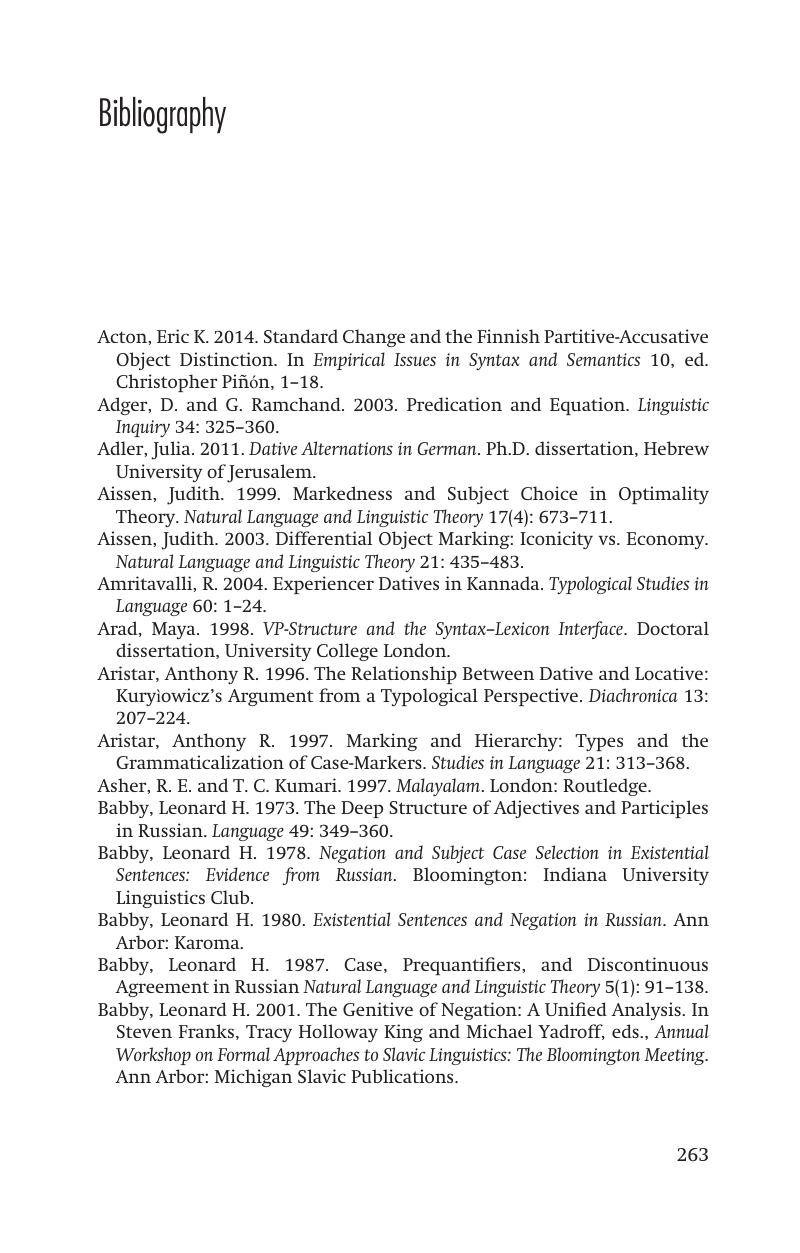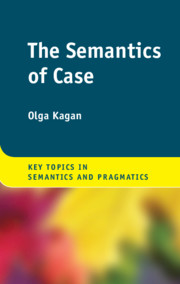Book contents
- The Semantics of Case
- Key Topics in Semantics and Pragmatics
- The Semantics of Case
- Copyright page
- Dedication
- Contents
- Figures
- Tables
- Acknowledgments
- Abbreviations
- 1 Introduction
- 2 Dative Case
- 3 Spatial Cases
- 4 Case and Aspect
- 5 Differential Object Marking
- 6 The Genitive/Accusative Alternation in Balto-Slavic
- 7 Predicate Case
- 8 Generalizations and Conclusions
- Terminology
- Bibliography
- Index
- References
Bibliography
Published online by Cambridge University Press: 02 April 2020
- The Semantics of Case
- Key Topics in Semantics and Pragmatics
- The Semantics of Case
- Copyright page
- Dedication
- Contents
- Figures
- Tables
- Acknowledgments
- Abbreviations
- 1 Introduction
- 2 Dative Case
- 3 Spatial Cases
- 4 Case and Aspect
- 5 Differential Object Marking
- 6 The Genitive/Accusative Alternation in Balto-Slavic
- 7 Predicate Case
- 8 Generalizations and Conclusions
- Terminology
- Bibliography
- Index
- References
Summary

- Type
- Chapter
- Information
- The Semantics of Case , pp. 263 - 285Publisher: Cambridge University PressPrint publication year: 2020



